Multi-turret independence
In Great Britain, the second legislator of tank fashion at the beginning of the 20th century, the creation of heavy tanks initially followed a different path - the improvement of the proven design of the familiar reckless "rhombuses." But it soon became clear that this path was a dead end, and the new English heavy tank, A1E1 Independent, also acquired towers. And immediately five.
Five heads
What could be the fighting in the future big war, it became clear during the Civil War that swept the former Russian Empire. Tanks here were used very limitedly, but even those battles in which they participated were enough to draw definite conclusions.
In the classical form, that is, as a means of breaking into the defense line, during the Civil War, tanks were used only during the storming of Tsaritsyn (modern Volgograd). The rest of the tanks are clearly inferior to armored vehicles, which were used by the warring parties much more widely. The fighting demanded high maneuverability, which tanks of that period could not provide
.
There were claims to some tanks and the issue of fire maneuverability. Placing weapons in the sponsons severely limited sectors of fire. And if in the conditions of a massive attack it was not so critical, single tanks in a number of cases turned out to be captured by infantry.
A1E1 Independent at the Vickers plant, 1926 year
It is not known how much the fighting in Russia influenced the further development of events, but one thing is sure to say - by the beginning of the 20-ies, the “diamonds” had obviously lost confidence from the British military. The time of the attacks of hundreds of tanks on the "lunar surface" was gone, the army needed completely different machines, much more maneuverable.
However, the first specification for a new heavy tank, dated 1922 year, clearly indicates that on the way to a new heavy tank, the British were not looking for easy ways. According to the requirements, the military wanted to get a tank with a lowered silhouette, but still without towers. The main armament in the form of 3-pound (47-mm) guns was supposed to be installed in the forward part of the hull, and the sponsons with a pair of machine guns should be placed on the sides. The engine was planned to be placed in the stern. The tank was supposed to easily overcome trenches up to 2,8 meters wide. By and large, it was all the same "diamond", but with a gun in front.
The only developer of the new tank was the firm Vickers. Just at that moment, her lightweight Vickers Infantry Tank No.1 came out on tests, gaining know-how in the form of a rotating tower. This tank had a purely machine-gun armament, and the Vickers Infantry Tank No.2, which was released for testing a little later, already had the same 3-pound gun in the turret.
It is not difficult to guess that the maneuverability of fire with the advent of the tower has increased dramatically. Understood it and Vickers, where in parallel with the development of machines with weapons in the body began to work out and alternative design. In March, 1923 was presented to the British War Department a draft design of a heavy tank, which was completely different from the original job received by the firm. Only the armament itself and the aft arrangement of the engine compartment remained in common with the original specification. By the way, the Vickers Infantry tank was not mentioned by chance. The design of the tower with the main armament for a heavy tank largely copied the turret of a light tank. The number of machine guns on a heavy machine project has grown to four, and they have placed them no longer in sponsons, but in small single towers.
It is clearly seen how much the body is pulled out of the tank.
Sir George Thomas Bachem, the chief designer of Vickers, "pushed through" precisely this multi-tower scheme. He found supporters in the Royal Tank Corps. As a result, the original concept of a long low tank without towers went into oblivion.
Meanwhile, Vickers Infantry Tank No.1 and 2 turned out to be an unsuccessful experience, and completely different machines replaced them. At the end of 1922, a prototype of Light Tank Mk.I was made, which quickly changed its name to Medium Tank Mk.I. And by 1925, the production of its more advanced version, Medium Tank Mk.II., began. In addition, in 1924, a prototype of the Birch Gun self-propelled gun was released. All these machines somehow influenced the construction of a heavy tank, designated A1E1. By May 1925, when Vickers had finished making the layout, the car had changed quite a bit.
Battle field battleship
Finally, the concept of the tank, which to the A1E1 index received the prefix Independent, that is, "Independent", was formed in the 1926 year. Unlike the Medium Tank Mk.I and Mk.II, which were produced at the Royal Woolwich arsenal, the Vickers management decided to build the prototype of a new heavy tank at its factory in Sheffield. The manufacture of the first tank ended in September 1926. It cost the Ministry of War a monstrous amount of money at that time - 77,5 thousand pounds sterling! For comparison, the Medium Tank Mk.II cost in 8,5 thousand pounds.
So Independent was in the original configuration
It is necessary to explain why the British military needed such an expensive car. Often there is a whole debate about the feasibility of this tank. They even claim that they were supposedly going to put a more powerful 75-mm cannon into it, and so on. So, to understand the need for A1E1, it’s worth looking at how the British military saw their new mechanized units.
The most massive machines were to be double tankettes with weapons in the form of a single machine gun. Their task was to fight the enemy infantry. At a higher stage were light (medium) tanks, armed with cannons and machine guns. In addition to fighting the infantry, they were assigned the task of destroying enemy tanks. At that time, the 3-pound cannon, especially the long barrel version, was quite enough for such a task. A high-explosive fragmentation ammunition for this gun was not even provided.
Finally, at the top of this tank pyramid were breakthrough tanks, or “battle tanks,” to which A1E1 belonged. These vehicles also had to have cannon and machine-gun armament, and most importantly, more powerful armor, protecting not only from machine-gun fire, but also from the first anti-tank guns. It is no coincidence that the thickness of the reservation of the development giant Vickers reached 28 mm - slightly more than that of Renault NC. At that time, this armor was quite enough to provide reliable protection against small-caliber artillery.
As for some rumors about the installation in the Independent 75-mm gun, here it will suffice to recall one well-known fact: such a caliber in the British army simply did not exist. As in the case of light / medium tanks, the English heavy tank gun was needed only to fight enemy combat vehicles. This tank, possessing thicker armor, had to break into the center of the enemy defense, pouring trenches with machine-gun fire from small towers. Thanks to the elongated hull, he could easily overcome trenches and anti-tank ditches, clearing the way for lighter tanks. At the same time, despite the large mass, the breakthrough tank should have maneuverability comparable to middle-class machines.
In order that the tankers could climb up, ladders were made at the side
It was such a "land battleship" and was built on the Vickers. The undercarriage of the tank largely repeated the Medium Tank Mk.I / II undercarriage. However, it was more likely a general concept, as well as the suspension, the design of the sloth and the drive wheel. On each board, the Independent had 8 track rollers combined in pairs in an 4 trolley. Front and rear were on one support roller of increased diameter. These rollers were located just above ground level, their task was to soften the blows when hitting the vertical obstacles.
To protect against enemy fire suspension elements, as well as road wheels were covered with removable screens. Characteristic details of the English tank were side hatches placed between the parts of the chassis. Tankmen didn’t use them too often, because this place didn’t differ at all in excessive purity.
The workplace of the driver
From the point of view of the working conditions of the mechanic A1E1, the Independent was fundamentally different from the previous British heavy tanks. After the "lozenges" it was almost a spaceship. The designers tried to maximally facilitate the work of the driver and make his workplace comfortable. First, in the new tank this crew member was sitting alone, no one interfered with it. For a comfortable placement of the driver in the bow of the hull was made a ledge. Due to the presence of a special observation tower provided a quite tolerable review.
But the miracles did not end there. The new heavy tank used the invention of Walter Gordon Wilson (Walter Gordon Wilson), one of the creators of the first tanks. This is a transmission with a planetary gear developed by Wilson back in the 1919 year. A1E1 was the first tank to receive a similar transmission. Thanks to her, the driver in addition to the traditional levers received the steering wheel, which was used during smooth corners. In addition, the operation of the mechanical drive facilitated the use of servo drives.
The tank body was assembled using riveting, which was quite traditional for that time. The fighting compartment was defended with sheets of thickness 28 mm, in the remaining parts of the vehicle the thickness of the armor ranged from 8 to 13 mm.
The engine compartment took up half of the total length of the hull. Especially for the new Armstrong Siddeley tank, a V-shaped 12-cylinder air-cooled engine was developed, which developed horsepower 350. Thanks to him, the power density of the A1E1 Independent exceeded 10 HP. per ton. The tank was equipped with the gearbox of the Swiss company Winterthur (now RENK-MAAG).
It must be said that A1E1 seems very long only from the outside. In fact, the total length of the tank was 7770 mm, which is a lot, but less than that of the famous "diamond" Tank Mark V.
Interior tower
The main tower A1E1, unlike the hull, looked more conservative. As mentioned above, the tower was taken from Vickers Infantry Tank No.2. The machine gun in the turret was missing, which is somewhat surprising, especially given the fact that the 3-pound cannon was supposed to be used solely to fight enemy tanks. The tower was made triple, and for the commander a commander's cupola was provided, shifted to the left relative to the longitudinal axis. On the right was a powerful fan, covered with an armored cap. Like the Vickers Infantry Tank No.2, this tower of six “slices” was assembled, to which the roof of the district was fixed. Inside the tower, as well as the fighting compartment, sheathed with asbestos sheets.
An additional innovation that was applied to the English heavy tank was the use of laringophones for the crew’s internal communications.
Money eater
The final assembly of the A1E1 Independent was completed at Vickers in October 1926. On November 13 of the same year, the tank first hit the lenses of photos and movie cameras. The car participated in the demonstration of the latest achievements of the English armory industry arranged for dominion governments. The seen picture definitely made a serious impression. A heavy multi-turret tank was surrounded by tankettes, like a battleship surrounded by destroyers.
Meanwhile, behind the performance in Camberley with the participation of A1E1 Independent, quite serious problems of this tank were hidden. On the one hand, the tank with a combat mass of 29 tons showed quite good dynamic characteristics. Its maximum speed reached 32 km / h, and even the average Medium Tank Mk.II was less agile. On the other hand, they had to pay a very high price for such speeds. The appetites of the 12-cylinder engine were huge: he devoured almost 2,4 liters of fuel per kilometer. No less impressive was the oil consumption - more than 10,5 liters per hour of engine operation! Found in the design of the tank and the mass of minor flaws that were to be addressed.
To begin with, we had to abandon the support rollers with rubber bands. Instead, rollers of all-metal construction were installed. Problems with brake tapes were solved by installing tapes with friction composite material applied to them made by Ferodo, ltd, now widely known as Ferodo. In 1928, Wilson developed a more advanced transmission, which was installed in the tank. Constant modifications have led to the fact that by the 1929 year, the combat mass of the A1E1 reached 32,5 tons.
As you can see, the A1E1 Independent was not significantly larger than the average three-turreted A6E2 tank.
Meanwhile, the tank had a significant problem, which was simply impossible to solve. The fact is that the elongated body created a lot of problems. However, on ordinary roads and flat parts of the terrain, this was not a significant drawback. The real troubles began when the tank needed to overcome biases or wide moats. At such moments, the engine power suddenly began to “miss”, although the power density even after all alterations remained at the level of quite satisfactory 10 hp per ton. In addition, the commander could not give commands to more than one tower, which significantly reduced the effectiveness of the tank in battle.
Despite the fact that the problems with movement over rough terrain were obvious, the War Department did not abandon attempts to bring the tank to mind. According to its characteristics, the tank remained quite modern even by the beginning of the 30-ies. In addition, too much money has already been invested both in the car itself and in its modernization.
It lasted all the way right up to 1935, when it finally became clear that there was no point in investing more in the Independent. By that time, A1E1 Independent “ate” 150 extra thousand pounds, that is, two more of their prices. In total, this tank cost in an amount equal to the cost of several dozen Medium Tank Mk.II, despite the fact that its combat effectiveness approximately corresponded to one such medium tank.
Light, medium and heavy tanks. All three in the series did not go
We did not send such a treasure to the metal - this steel leviathan cost too much. A1E1 delivered to the training center
located in bovington. For a while, the car remained a monument to itself, until in 1940, it again fell into military service. After the British lost a bunch of tanks in France, each combat vehicle was on the account. For this reason, A1E1 Independent returned to service. The tank was installed at a crossroads near Bovington, acting as a mobile firing point. However, the Germans never landed in England, so after a while the tank returned to the role of the exhibit.
The only prototype of the heavy tank A1E1 Independent survived the war, the post-war delivery of museum exhibits into scrap metal and is now one of the stars in the Tank Museum exposition. The machine is in good technical condition. However, the statement on the course we are not talking, at least for now.
Despite such a sad ending, there was no complete failure to work on A1E1. In the end, this machine turned out to be the only 20-s heavy tank that reached the manufacturing stage in metal. In addition, it was the first truly multi-turreted tank, which gave rise to a whole direction in the world tank building. The ideas implemented in A1E1 were later used in other machines, including the Soviet T-35. You can often even hear that T-35 was copied from A1E1, although it is not. It was only the general concept that was copied, and that with a lot of reservations.
However, in addition to multi-turrets, in the course of designing and upgrading A1E1 Independent, many solutions were used for the first time, later applied in a large number of tanks from different countries. In particular, it concerns the transmission with a planetary gear, the successful organization of the workplace of the driver. In short, the five-turreted machine left a noticeable mark on the world tank building.
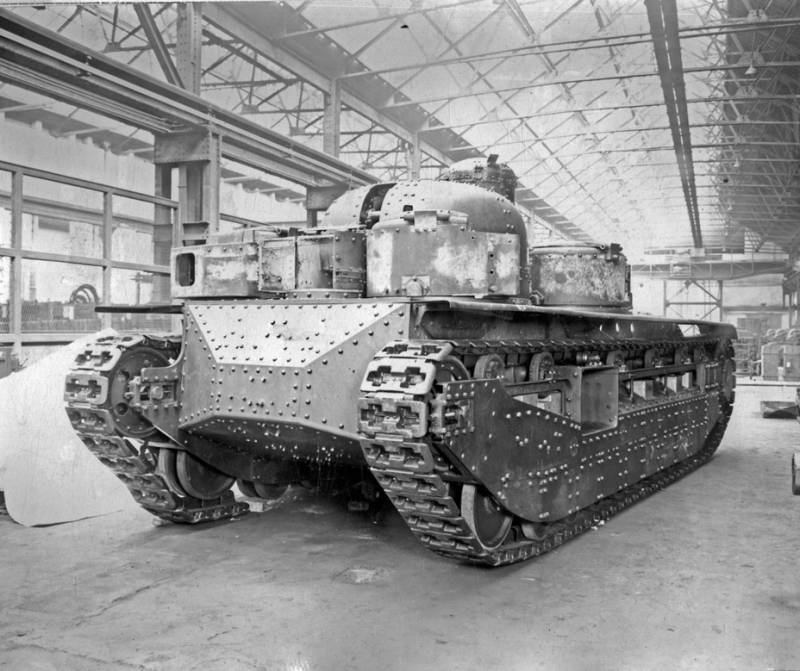
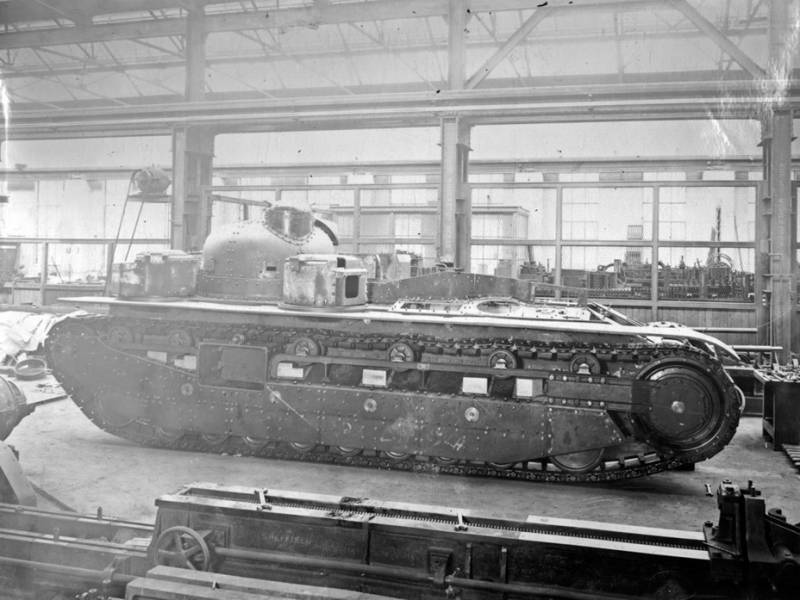
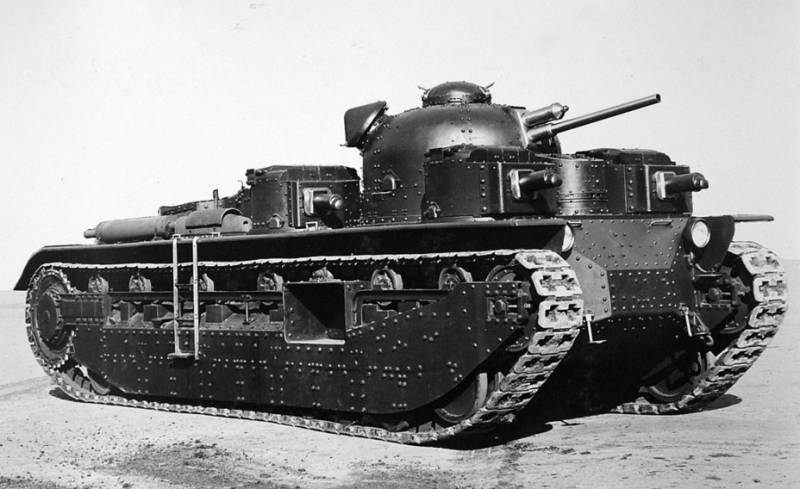
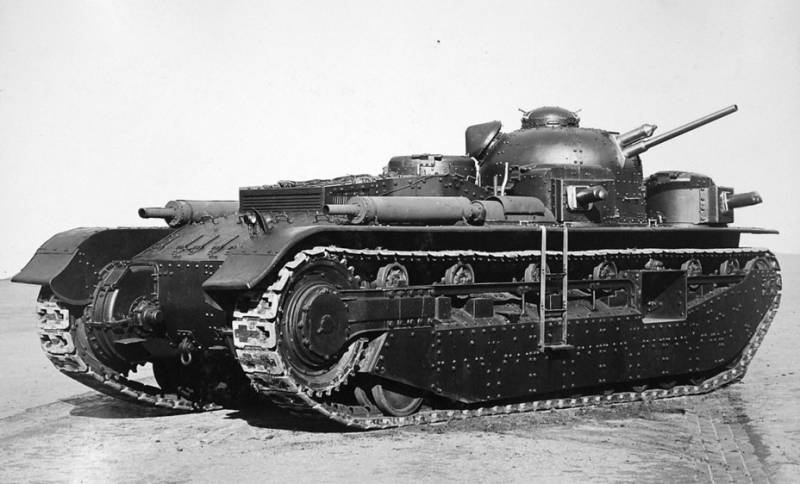
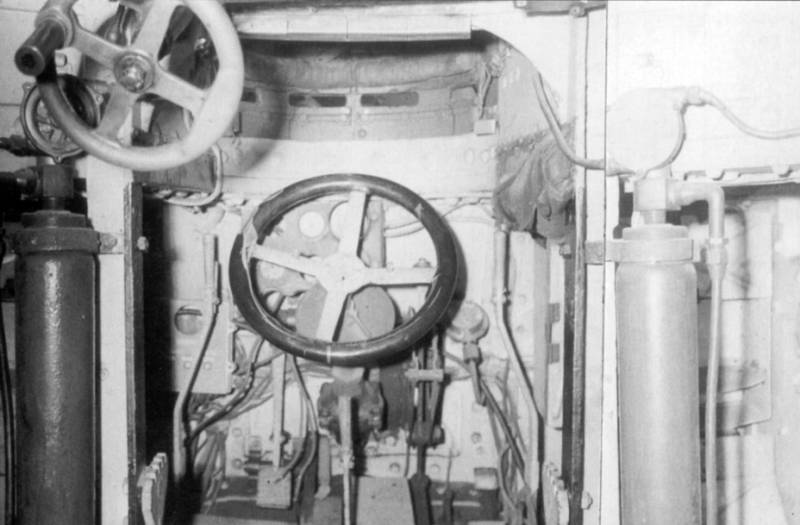
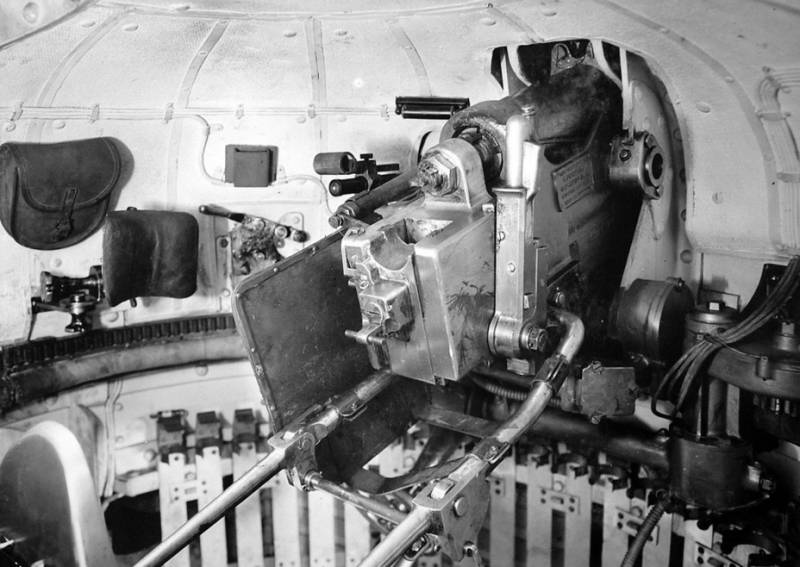
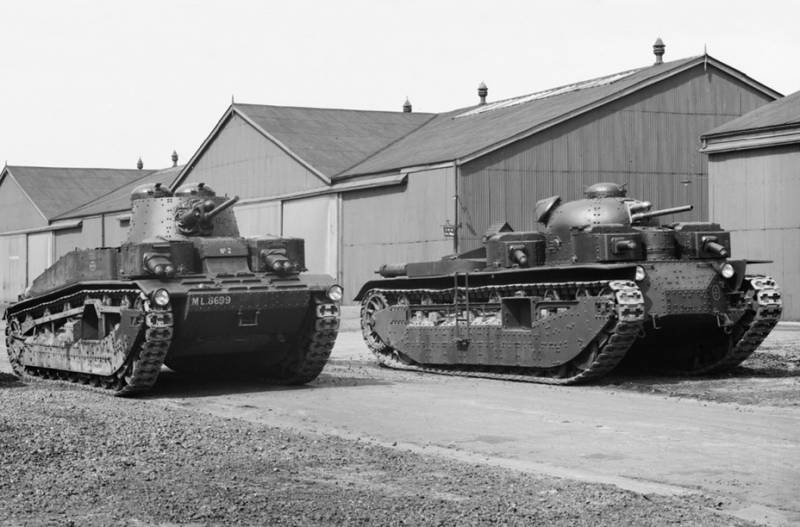
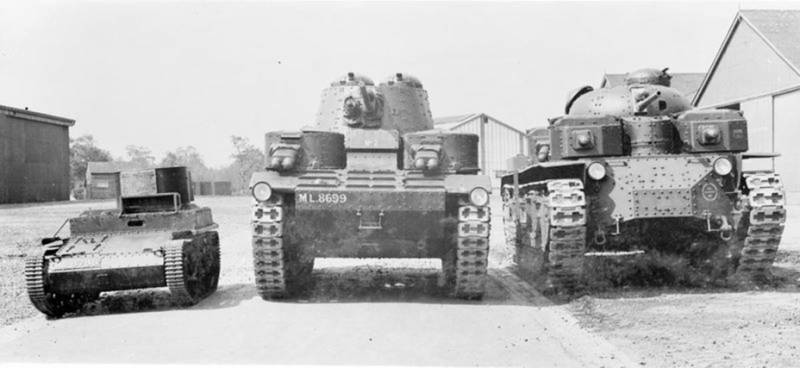
Information